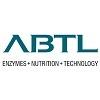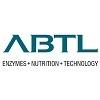
Content sponsored by:
ABTL Advanced Bio-Agro Tech Ltd
Enzymes – Growth Trends & Forecasts
Published: May 7, 2024
Source : Mr. Sumit Sipany, Assistant Manager - Marketing. Mr. O. P. Singh, Managing Director, ABTL
Presently livestock keepers require more competent exploitation of low-quality feedstuffs due to rising economic pressures. The animal's digestive system is not fully efficient. Poultry cannot digest approximately one fourth of the diet they are fed because the feed ingredients contain undegradable harmful factors that hinder the digestive process and/or the animal is devoid of the necessary enzymes needed to degrade certain complexes in the feed. Supplementation of feed with enzymes enhances its nutritive value, thereby increasing the effectiveness of digestion. Animal feed enzymes help break down indiscriminating factors (e.g., fibre, phytate) that are naturally occurring in various feed ingredients. Indiscriminating factors may result in decreased meat or egg production and inferior feed efficiency, and can cause digestive disturbances as well. Exogenous enzymes are mainly added to enhance the accessibility of nutrients from feed ingredients. The animal feed industry uses enzymes that degrade crude fibre, starch, proteins, and phytates, and being proteins, they are eventually digested or excreted by the animal, having no residual effect on products like meat or egg. Feed enzymes enhance the competence of meat and egg production by improving the nutrient utilization and reducing animal excreta/waste.
Enzymes are proteins that help speed up metabolism, or the chemical reactions in our bodies. The molecules upon which enzymes may act are called substrates, and the enzyme converts the substrates into different molecules known as products. A “substrate” is the portion of the feed that the enzyme will break down to release the nutrients bound to it. It is similar to a “lock and key” concept, where the substrate is the lock, and the enzyme is the key. If there is no lock, then it becomes absolutely pointless to buy a key! Therefore, it is important to consider what substrates (i.e. ingredients) are prevalent in your diets to best determine which enzyme(s) you should include for optimal results. In the field of nutrition and applied feeding programs, one area in which producers have adopted improved technology is the use of feed enzymes. The advantages of using commercial enzymes in poultry feeds include improved productive performance and feed utilization, minimized environmental pollution due to reduced nutrient of manure.
Feed Enzymes Market Analysis
The Feed Enzymes Market size is estimated at 1.38 billion USD in 2024, and is expected to reach 1.76 billion USD by 2029, growing at a CAGR of 5.04% during the forecast period (2024-2029).
Market Size in USD Bilion CAGR 5.04%

The global feed enzymes market is experiencing rapid growth due to the crucial role that enzymes play in increasing energy and nutrient intake from animal feed. Cereals, in particular, benefit from using enzymes, as they can increase starch intake in animals, which is especially useful when cereal prices are high. Despite their importance, the feed enzymes market accounted for only 3.8% of the global feed additives market in 2022.

The Asia-Pacific region is the largest because of increased feed production, per capita meat consumption, and high feed additives adoption rates.
- Asia-Pacific is the largest market for feed enzymes, accounting for 31.6% of the global market share in 2022. North America and Europe followed closely, accounting for 25.8% and 23.1% of the market share, respectively. The high market share in Asia-Pacific is attributed to higher penetration rates of feed additives and a higher animal population.
- Carbohydrases are the most widely consumed feed enzyme, with a market value of USD 576.5 million, due to their ability to increase the energy and starch intake from cereal feed. Carbohydrases are expected to be the fastest-growing feed enzyme, with a CAGR of 5.1% during the forecast period. Phytases are also expected to record a CAGR of 4.9% during the forecast period.
- Proteases and lipases are other enzymes that are significantly used to increase protein digestibility and utilization by animals. The demand for meat products is expected to increase the market for these enzymes, with a CAGR of 5.0% during the forecast period.

It has the largest market share due to its ability to increase the energy or starch intake from cereal feed and increase the intake of protein and minerals from animal feed.
- Feed enzymes are critical in increasing the intake of energy, starch, and phosphorus from animal feed. In the case of cereals, feed enzymes increase the starch intake of animals, which is beneficial when cereal prices are high. Despite their importance, the feed enzymes market accounted for only 3.8% of the global feed additives market in 2022.

- Asia-Pacific is the largest regional segment in the global feed enzymes market, accounting for USD 395.9 million in 2022 due to the higher penetration rates of additives and animal cultivation in the region. However, the United States is the largest country-wise segment for the global feed enzymes market, accounting for USD 225.8 million in 2022, or about 18.0% of the market share, due to highly developed production practices and commercial animal cultivation.
With the growing concerns over rising productivity, the growing global population, and increasing urbanization, an increase in the consumption of meat and dairy products is expected to drive the global feed enzymes market with a CAGR of 5% during the forecast period (2023-2029). This growth will be driven by the need to improve animal health, increase the nutritional value of animal feed, and enhance animal productivity.
Global Feed Enzymes Market Trends
High demand for animal protein and poultry products such as eggs with increasing investment in poultry sector is increasing poultry population
- The poultry population has significantly increased in recent years due to the growing demand for chicken meat and eggs in daily diets. The shift toward poultry products has been driven by the increasing prices of other meat, such as pig meat, in the United States. The consumption of eggs in Europe increased by 4.6% between 2017 and 2021, accounting for 6,135 metric tons in 2021.
- Asia-Pacific is the largest producer of poultry birds, with production increasing by 6.6% in 2022 compared to 2017. The rise in poultry production is due to the growing demand for animal protein following the outbreak of African Swine Fever, which has reduced the supply of pork meat. China accounts for 40% of global production, the country has more than 900 million stocklaying hens, and the largest layer poultry farming center can hatch 60 million chicks annually.
- The Middle Eastern region is also expected to witness growth in poultry production during the forecast period (2023-2029).
- The increasing demand for poultry products, coupled with rising investments in the poultry sector, is expected to strengthen the growth of feed production. This, in turn, is expected to drive the demand for feed additives in the global market during the forecast period. Overall, the poultry industry is poised for significant growth in the coming years, driven by the shift toward poultry products and increasing investments in the sector.
Production Volume of Poultry Feed, Metric Ton, Global, 2017-2022


Related topics:
Mentioned in this news release:


Influencers who recommended :
Dr. Mandar ShirolkarRecommend
Comment
Share

6 de junio de 2024
Most of the research so far indicates that supplementing with enzymes results in increased body weight, improvement in feed efficiency, reduction of gut viscosity & a shift to a more favorable gut environment for the growth of beneficial bacteria.
Use of enzymes gives better ROI through improved bird performance to poultry producers.
Use of enzymes gives better ROI through improved bird performance to poultry producers.
Recommend
Reply

Would you like to discuss another topic? Create a new post to engage with experts in the community.



